The Kokoda Trail in Papua New Guinea is known as one of the toughest multi-day treks in the world. It also has an immense historical significance as it was the epicenter of the Kokoda Battle between the Japanese and the Australian Forces in WWII. The grueling battle of war along the muddy ridges of the Kokoda track was played out in harsh tropical conditions. Today, trekkers from around the world reflect on the four pillars of Kokoda, which are mateship, endurance, sacrifice, and courage as they push themselves physically and mentally to complete the arduous journey across the Kokoda Track.
I completed the Kokoda Track in 2019 with my mate Josh Lynott on a tour with Buna Treks & Tours (one of only two locally-owned trekking companies. In this blog post, I will share with you how we prepared, what we packed, how difficult the track was, and, of course, share my experiences and photos from our 8 days along the trail. You can find my day-by-day breakdown of the trail with photos below the general information sections. There’s also a detailed packing list at the bottom of the post.
THE KOKODA TRACK
I hope this blog post is a one-stop guide to give you all the information you need before deciding to lock in your Kokoda adventure. I really can’t recommend it enough and enjoyed not only the physical challenge but switching off from internet connection, electricity, and many of the distractions we are faced with today. It was a time to learn, reflect and push myself in all departments.
KOKODA TRAIL OR KOKODA TRACK?
First things first, let’s clear something up. Is it Kokoda Trail or Kokoda Track? Well, the short answer is that both are correct, and both are incorrect. It depends on who you ask. I too had this question and was informed it was a bit of a debate so dug a little deeper. It appears that mentions of track and trail have been used throughout history and both are acceptable now although many like to call the entire trail the Kokoda Track.
I had mixed responses from locals but a lot of the operators like to go with Kokoda Track. You can be sure to be wrong and right on this one no matter how you approach it. For more reading on the debate, you can check out this article I read about the topic. Throughout this blog post, I will use both terms interchangeably.
WHERE IS THE THE KOKODA TRAIL
The Kokoda Track is a single-file trail, which runs through the Owen Stanley Range in Papua New Guinea. The Track begins at Owers’ Corner in Central Province, which is 50 kilometers east of the capital, Port Moresby. The Kokoda Track finishes in the village of Kokoda, which is in the Oro Province.
Most people make the journey from Owers’ Corner to Kokoda but it can be done in either direction. The most common route is to begin in Port Moresby you will drive to Owers’ Corner, hike through to Kokoda, and then drive down to Poppendetta Airport to fly back to Port Moresby.
BEST INSURANCE FOR TRAVELERS

Don’t wait for an accident to happen… get insured! My travel insurance is HeyMondo which offers low-cost travel & medical insurance. That’s me on the left with three teeth knocked out after a motorbike crash in Bali!
You can click to read my Full Review of the Best Travel Insurance.
I’ve made several successful claims with HeyMondo and find their customer service very quick and helpful. Click the button below to get a 5% DISCOUNT
MAP OF THE KOKODA TRAIL
The map of the Kokoda Track below shows each of the campsites and villages along the trail. You won’t necessarily stop and stay the night at them all but you will definitely pass through them all. Your guides will choose the best locations depending on your speed and projections for each day. They will also know which campsites are busy, beautiful and the right choice for your group regarding facilities and space.

KOKODA TRAIL DISTANCE
The trail is a total distance of 96 kilometers, which sounds like a long way but when you break it up over 8 days it becomes a manageable 12 kilometers a day. The important part to consider is that it is very slow going due to the muddy and uneven terrain. 12 kilometers on flat terrain walking around the local park may take you 2-3 hours but on the Kokoda Track, you can expect to go twice as slow so 5-8 hours a day of hiking is about the norm.
KOKODA TRACK ALTITUDE AND INCLINE
Over the course of 96 kilometers, you can expect to gain over 6000 meters of incline. The trail is in a constant state of undulation with 300m of climbing followed by a 200m drop. Despite the total incline of 6000m+, the highest point of altitude is 2,190m at Mt. Bellamy. Because of the high altitude during the middle days of the hike, it can be a bit colder at night and fresher in the air.
HOW TO TRAIN FOR THE KOKODA TRACK?
The answer to this question is not a one-size-fits-all regime. Many young guns may already be in good enough shape to get through the 96 kilometers without extra training. However, it isn’t just about surviving, you want to be thriving and enjoying the trail rather than ‘digging deep’ every day to battle through. I’m not going to formulate a specific training plan but the points below will make it clear what type of training would need to be required.
- You should be able to complete a hike with 600m of elevation throughout. IF YOU CAN’T YET, start by doing a hike with 3-400m of elevation and then repeat once or twice a week leading up to your Kokoda Track adventure. Some days on the track have 1000m+ of climbing.
- You should be able to hike several days in a row during your training. Practice backing up a big hike the next day with a smaller one and try and string together multiple hikes and workouts back-to-back
- I would say running is a great overall fitness activity but not necessary at all to train for Kokoda. Long hikes with moderate incline with a duration of more than four hours are a great, low-impact activity to prepare you.
- Don’t wait to prepare for the hike until one month before. Give yourself three months to really make some changes in your body and your muscles to ensure you are ready when the time comes.
- When people ask how hard the Kokoda Trail is….take comfort in knowing that our guides told us the oldest hiker they had was 75 and the youngest was a 12-year-old girl. It’s a mental challenge more than it is physical. You just need to keep walking and believe you will make it.
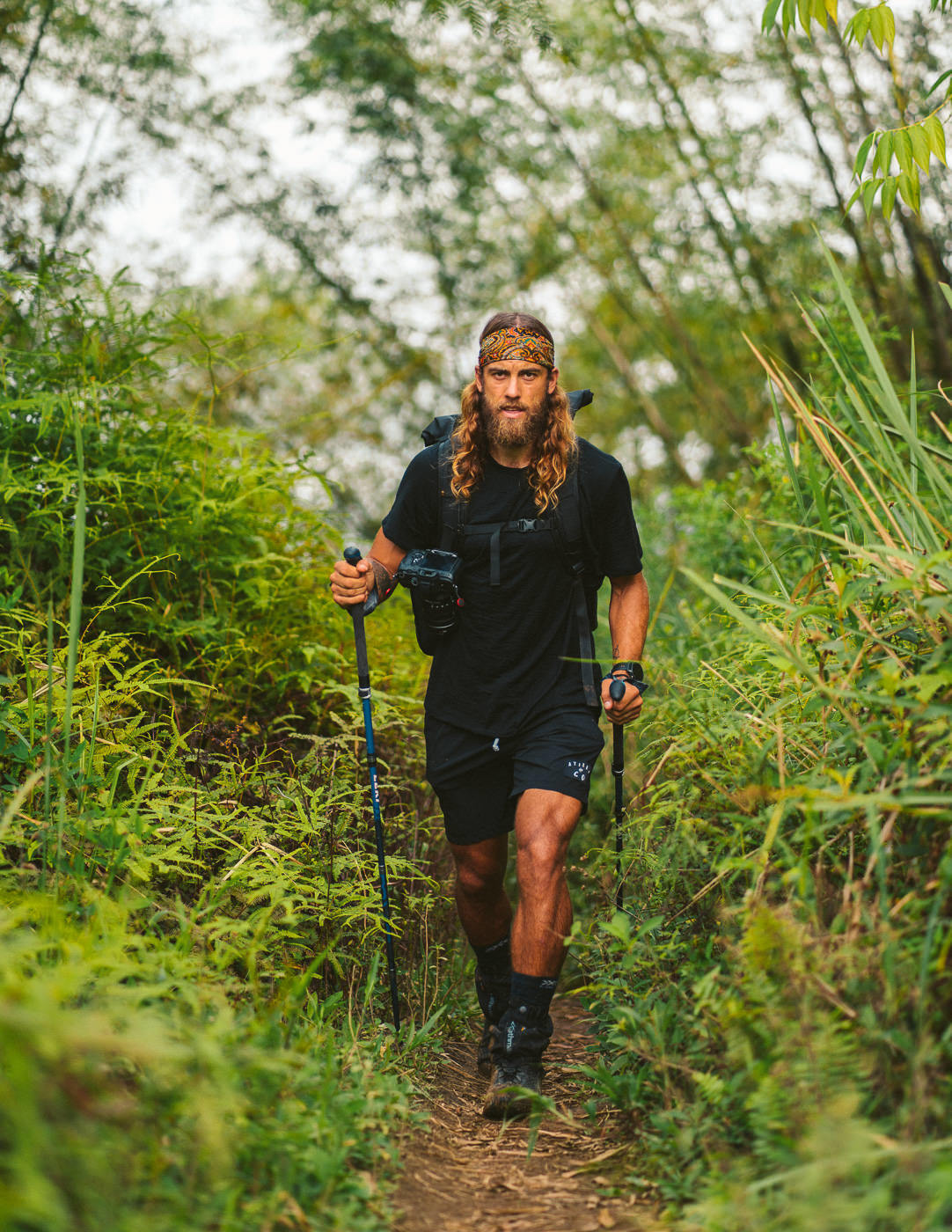
BEST TIME TO TREK THE KOKODA TRACK. WHAT’S THE WEATHER?
The Kokoda Track is well up in the highlands of Papua New Guinea and is a tropical country. This means the country has a monsoonal climate with hot, humid temperatures. During the day, you can expect 24-32 degrees celsius while nights can be 2-18 degrees throughout the trek at different times of the year. Humidity on the Kokoda Trail is the real killer, often recorded between 75-95%.
There is no dry season, just a wet and ‘drier’ season in the highlands of Papua New Guinea. The wet season is between November to April. Most of the trekking companies don’t operate from November to March due to the rainy conditions. We did our hike during October and it rained every day in the afternoon but it wasn’t a bad experience.
The best time to trek the Kokoda Track is during the dry season, which runs from April to October but you should still expect rain. The other part to consider is that when we went on the fringe on the wet season there were hardly any other trekkers. It was peaceful. In the peak, dry season you can expect to share facilities, campsites, and the trail but it is rarely overflowing.

BOOKING A TOUR AND HOW TO CHOOSE WHICH TOUR COMPANY
There are 98 tour companies currently offering tours of the Kokoda Track but only two are locally owned. That’s important to know. We did our trek with Buna Treks & Tours, which was formed by a group of determined local guides, who had for years worked for Australian tour companies. Learning plenty over several decades, they set up their own tour company and are now offering one of the most authentic experiences on the trail from locals, by locals for you.
Florence and Watson from Buna Treks & Tours met us the night before our trek in Port Moresby and joined us for dinner. They checked all our gear and answered any questions we had about what we needed, what to expect, and how the whole experience would work.
This was important because once you are out there, you have no electricity or internet so you need to be well-prepared. The team is from the town of Buna, which is the town near the airport at the end of the trail. They are all local, hard-working guys and even a few of the ladies guide the trek including Florence (don’t underestimate her, I think she’s the strongest of them all!)

Buna Treks & Tours offer a point of difference in that the guys love the trail. They hiked with two guitars, traditional drums, and traditional outfits and shared with us traditional dances and performances as well as constantly creating good vibes with tunes on their guitars. Imagine hiking up 1000m+ of incline on a muddy track while playing the guitar.
I can’t thank the team enough from Buna Treks & Tours for such an incredible experience. We loved all of you guys and I truly hope you guys will choose local and get to know the team during your eight days in the jungle.
The cost of the tour depends on the number of trekkers in your group (the more you have the less you each pay) and the duration of the trek. It’s possible to do the trek in 5, 8, or 11 days but generally, eight is the ideal number and manageable for most. We did 8 and found it comfortable and enjoyable with time to relax at each campsite and village.
I’ll leave the link here to the booking page on their website so you can check the rates, details, and information about the team: Buna Treks & Tours Website
To visit their website: Buna Treks & Tours
If you want to contact Florence and the team directly to make an inquiry or ask some questions you can reach them via email or phone.
To send Buna Treks & Tours an email inquiry: [email protected]
Phone number: +675 7690 0412

MY EXPERIENCE ON THE KOKODA TRACK
In this section of the blog post, I’m going to give you a little bit of insight into each day on the trail. It won’t be a turn-by-turn description but just a few thoughts from Josh and myself that we jotted down each day as well as our favorite shots.
DAY 1
The big adventure began with a windy drive to, Owers’ corner the start of Kokoda. Our intention was to finish the hike in 8 days (96km). Maybe we’ll do it faster but we’ll see how we go. We stopped off on the way to Owers’ corner at the memorial where hundreds of soldiers are buried. It was our first time encountering the scale of the losses and it was a quiet, reflective moment as Watson, our senior guide, talked us through some of the stories and facts of the Kokoda Battle. Watson’s grandfather was a Fuzzy Wuzzy Angel, which means he was an integral part of the Australian mission helping to carry the injured and critical supplies.
After a last-minute check of all the gear, we set off with smiles and sunny skies but just two minutes into the hike it started to bucket down with rain! What a welcome to Kokoda that would set the tone of the next week. Everything we were carrying was completely saturated.
The boys told us to expect the unexpected in Papua New Guinea, you never know what the weather is going to do. The great thing about tropical rain, even if it is torrential, is that it’s not cold. We pushed on in our t-shirts and shorts not overly bothered by the ridiculous downpour that just soaked us. The great part about the downpour was that it meant there was no need to take your shoes off for river crossings, there was no point.
Day one was a short day, only hiking for 2-3 hours, and relatively easy for me. We trudged through some river crossings and muddy sections, but nothing to test our mettle yet.
Arriving at camp, the sky turned all shades of pink and purple. We were also treated to a full rainbow as the guides sang and played guitar.
One of the quotes of the day was from Watson, team leader of Buna Treks & Tours: “I always try and take a bit of their mind with me.” This was in reference to the trekkers he guides and the people he gets to meet along the trail. We enjoyed the idea that you can take ideas from everyone you meet and it’s a privilege to gain an insight into their mind.
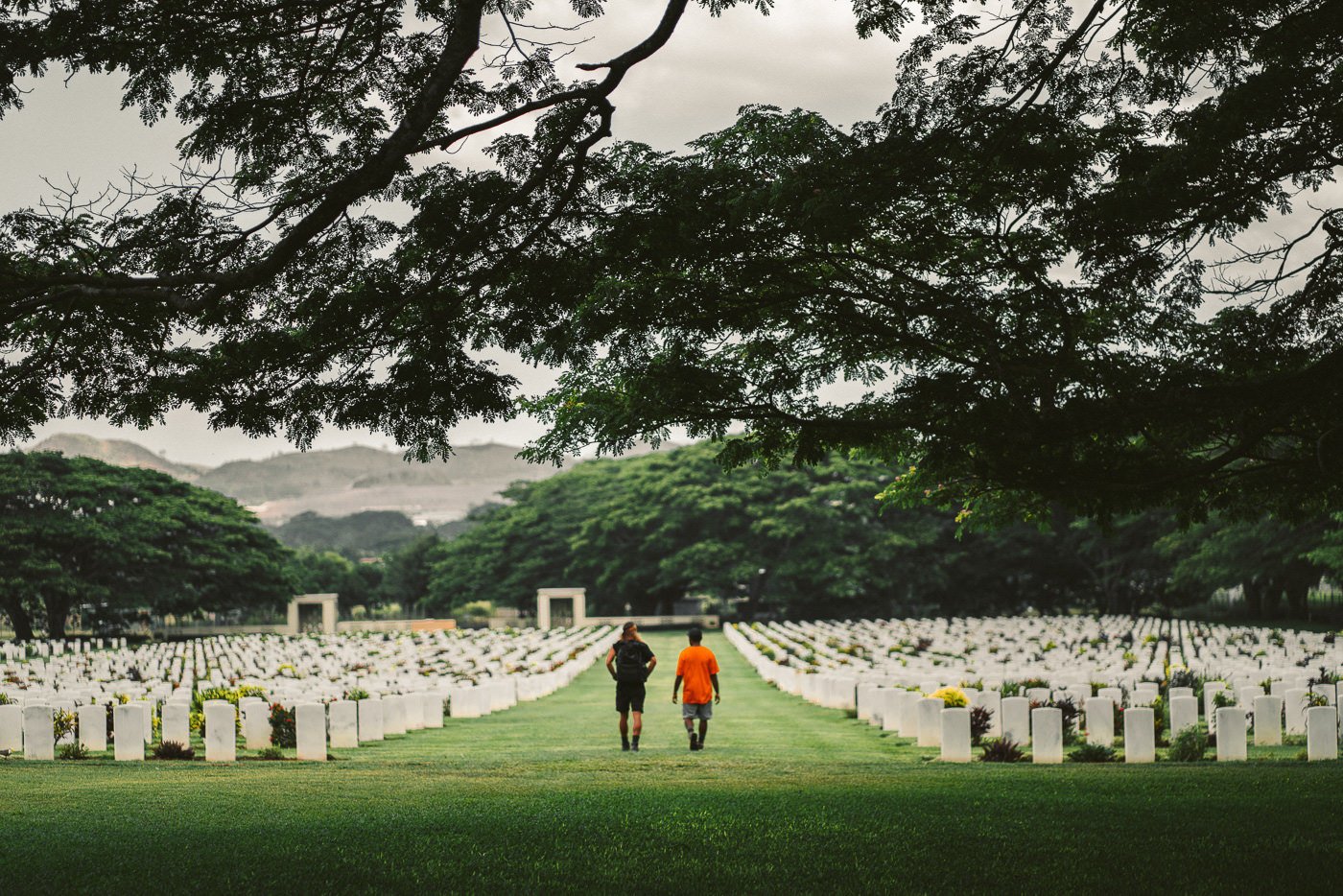








DAY 2
The second day on the Kokoda Track is a reality check. You are sliding on wet socks, and wet shoes and have 90 kilometers to go. There is nowhere to hide. Our hike today was a 400m climb in total taking us only 4-5 hours before we reached our camp.
This part of the trail takes you to some of the most significant sections of the Kokoda Battle as you reach the area where the Japanese were finally forced back. We also had our first look at several of the trenches the Australians used along the ridges.
We arrived early to camp two and beat the rain, which meant we could dry our clothes out in the hut. This was a big win. An afternoon spent inside the hut, watching the storm around us was surprisingly blissful.
DAY 3
Josh wrote today’s summary from the campsite on day three.
There’s a deeply warming feeling about being under shelter away from the elements. Currently, I’m drying my towel and clothes next to the campfire. It’s raining again, that’s been a trend every afternoon. This morning was noticeably hot, I was sweating for hours on end. We left camp at 6:37 am from camp two. Weetbix for breakfast today, what a treat that was. A little taste of Australia out here on Kokoda.
So far, the best word to describe Kokoda is undulating. We climb and then descend but rarely do we hit flat ground.
I think that today we did maybe 800-100m of climbing across the 15km. After our hiking rampage in Switzerland, it is very manageable and our legs are conditioned.
Smoke from the fire makes my eyes cry but the setting is so peaceful. I have been forced (in the best way possible) to disconnect and slow down, it’s great.
I have found that I have been reminiscing and having many nostalgic thoughts. Thinking about past adventures, romances, physical feats, and much more.


What are my favorite pieces of travel gear?
There are four pieces of gear that I simply never travel without. These are four items that I using right now and this list gets updated every year! Here are my travel essentials.
- Packing Cube Set: Once you cube you’ll never go back. Organize your clothes within your luggage with these smart mesh containers. It will revolutionize your packing.
- Quick-Dry Towel: A quick-dry towel is a must for travelers. It hardly takes up any room and dries in seconds.
- Travel Wallet: Keep your passport, wallet, and vaccine card safe as well as any forms and important documents you need to store.
- Grayl GeoPress Water Filter Bottle: I’ve used this for three years. It filters your water with one press and you can drink directly from it. Never buy a plastic water bottle again!
DAY 4:
Today was a long stretch with a solid amount of climbing (1500m), half of which was in the pouring rain. This is the day that when finished puts you in the no-return zone and you are now in no-mans land. Not that we ever had any intentions of turning back. Reaching camp, changing into dry clothes, and sitting by the fire was a welcome relief after being wet for at least the last four hours of the hike.
I had never seen a jungle, like what we saw. The valleys of lush green, occasional patches of luminous maroon leaves, big walls of tropical plants. It was special.
DAY 5
Today was slow and steady out on the Kokoda track. We had a faux departure of 6:22 am. We went to look at an airplane that had a crash landing recently. It was very out of place and kind of funny to see. We returned from our ‘pre-adventure adventure’ and set off to start hiking at 7:00 am.
We slept at Epogi Village, the biggest village on the track and also the halfway point.
The Routine has been bed before 7:30 pm and up at 4:45 am. We’ve actually been sleeping so much!
Breakfast was by the fire in the hut today, eating our Weet-bix, and drinking a concoction of coffee/milo – it was a great way to start the day. I honestly wish more people could experience the tranquility of it.
Kokoda has had far more beauty for nature than I expected. There are ever-changing micro-climates, you really never get bored. The types of trees are continually different which I have enjoyed.
Today involved more climbing; we did over a vertical kilometer in elevation. The moss forest was by far the most enjoyable thing today.
Tonight our guides danced and played traditional PNG music. I’m starting to catch onto their tunes. A small choir of men’s voices well harmonized and partnered with a guitar is very wholesome. I should learn guitar, at least just the basics.



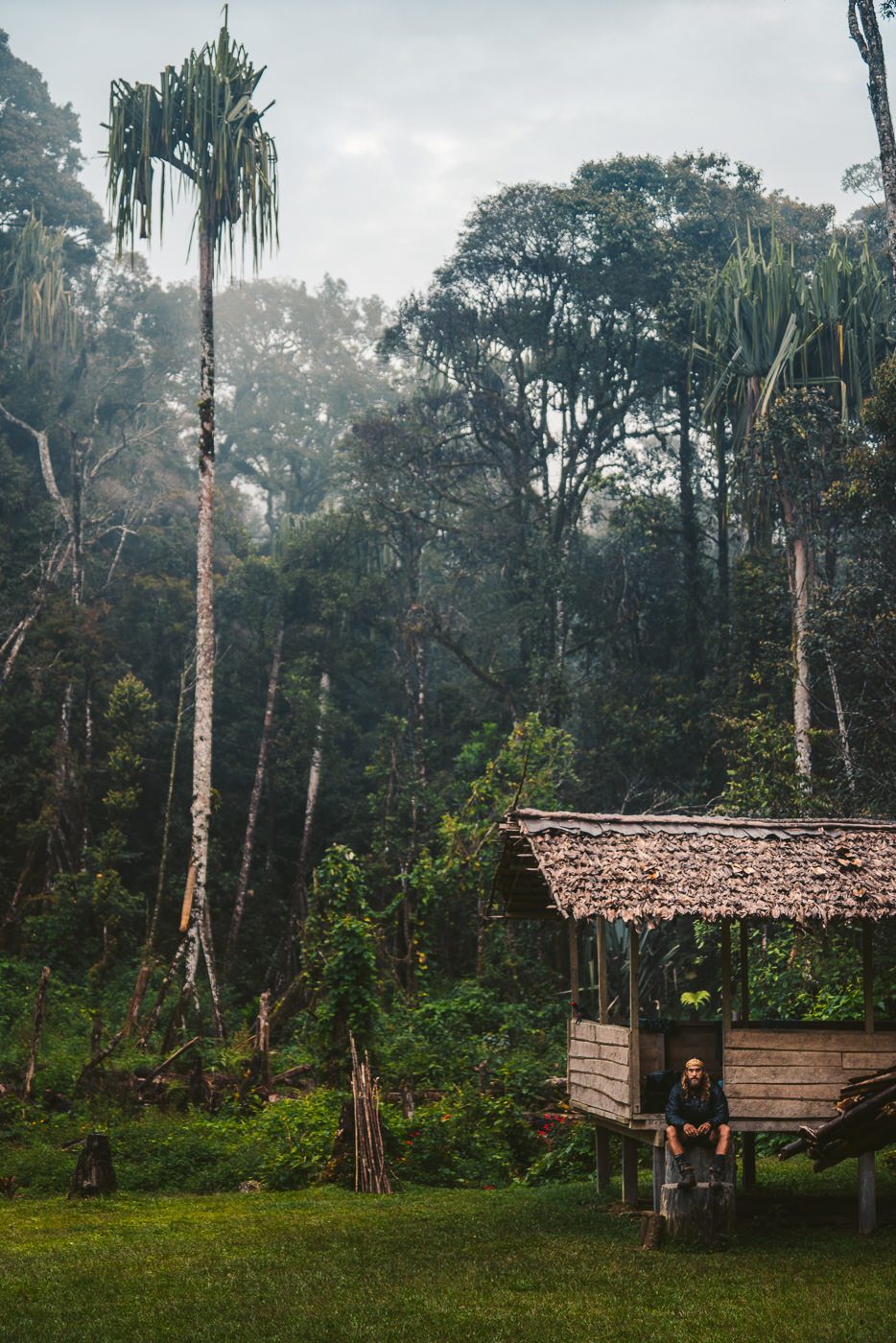
DAY 6
We made it before the rain again. It has nearly been a definitive pattern. By 3 pm it will be raining. It’s great to arrive before the rain, that way all our gear stays dry and we get to shower or swim. (We can obviously shower or swim if it’s raining, but that’s not as enticing.)
Priority one at any camp is to get the fire going. Once the fire is going, the water is on the boil and a cuppa’ tea shortly follows.
Today we made it to the highest point of the entire trek, Mt. Bellamy. It’s approximately 2100m, however, it was not the hardest climb. We meandered along through more ‘moss forest’ and an undulating trail. There are some very scenic sections that we documented. I would genuinely recommend Kokoda to people. Simply put, it is just so beautiful.
Over time, people have obviously enforced a path through the weight of their continual footsteps, but it still seems very natural and untouched to me. I imagine the consistent rain washes away all the footsteps each day.
We began today at 6:33 am. Porridge was served for breakfast again, I’m loving porridge for breakfast. It seemingly fuels us well, especially with a dash of honey.
The guides us at lunch with peanut butter and Nutella tortillas, what a treat this deep into the hike.
The camp we arrived at today is awesome. We swam in the pool of a small waterfall and managed to climb up and jump off the rocks beside it. The water was very very fresh.
Physically, we feel great. The legs are fine and not fatigued. we’re scoring 8-9 hours of sleep each night which is fantastic.
Our hiking leader, Daryl, hiked noticeably quicker today. He’s a machine. We did 13.2 kilometers and made it to camp around 1:30 pm.
Again, being in a warm dry outfit whilst listening to the rain pound against the tarp is an atmosphere we love. Today’s work is done, now we can relax and enjoy the hours of ‘zen’ before tomorrow.



DAY 7
Today was the most challenging day so far. Before starting the trek at 6:15 am, we had a damper for breakfast. This was my first experience with a damper. A small fire, tea in hand, and PB + honey on my damper, winning.
We kicked off with two water crossings, two of at least ten that we crossed throughout the day. Some were more precarious than others. Josh earned himself the title, ‘Jittery Josh’ after a few slips on the crossings but no major accidents to report.
Breakfast to lunch was slow going, it took a while to progress. With lots of tree roots, it’s not easy to simply ‘walk’ and get into a good rhythm. Kokoda requires a lot of focus on your footing, otherwise, it could be very easy to fall.
‘Choco vine’, a plant that grows out of control in PNG has been a new inclusion to our meals. It surprisingly tastes great. It’s good to get some greens into the diet too.
After lunch, both the pace of hiking and the scenery picked up. We passed through some of the best jungles I’ve ever seen! It was the best of the trip so far. The greenery and the way it takes over the land are unbelievable. An ocean of green, truly. All the tall trees are covered in moss or vines, there is so much for the eyes to take in. It’s a sight to behold!
We made it to camp, one minute before the rain started. We were very lucky. It was also extremely humid today.
Physically, we could feel the fatigue in my knees today and hips. The 1700m of downhill is no easy task. However, tomorrow will be easy.
We are sleeping in a tin shed tonight. We’ve also been having very intense, weird, and vivid dreams. Maybe that is a result of the increase in sleep and being completely disconnected from electricity and the internet.
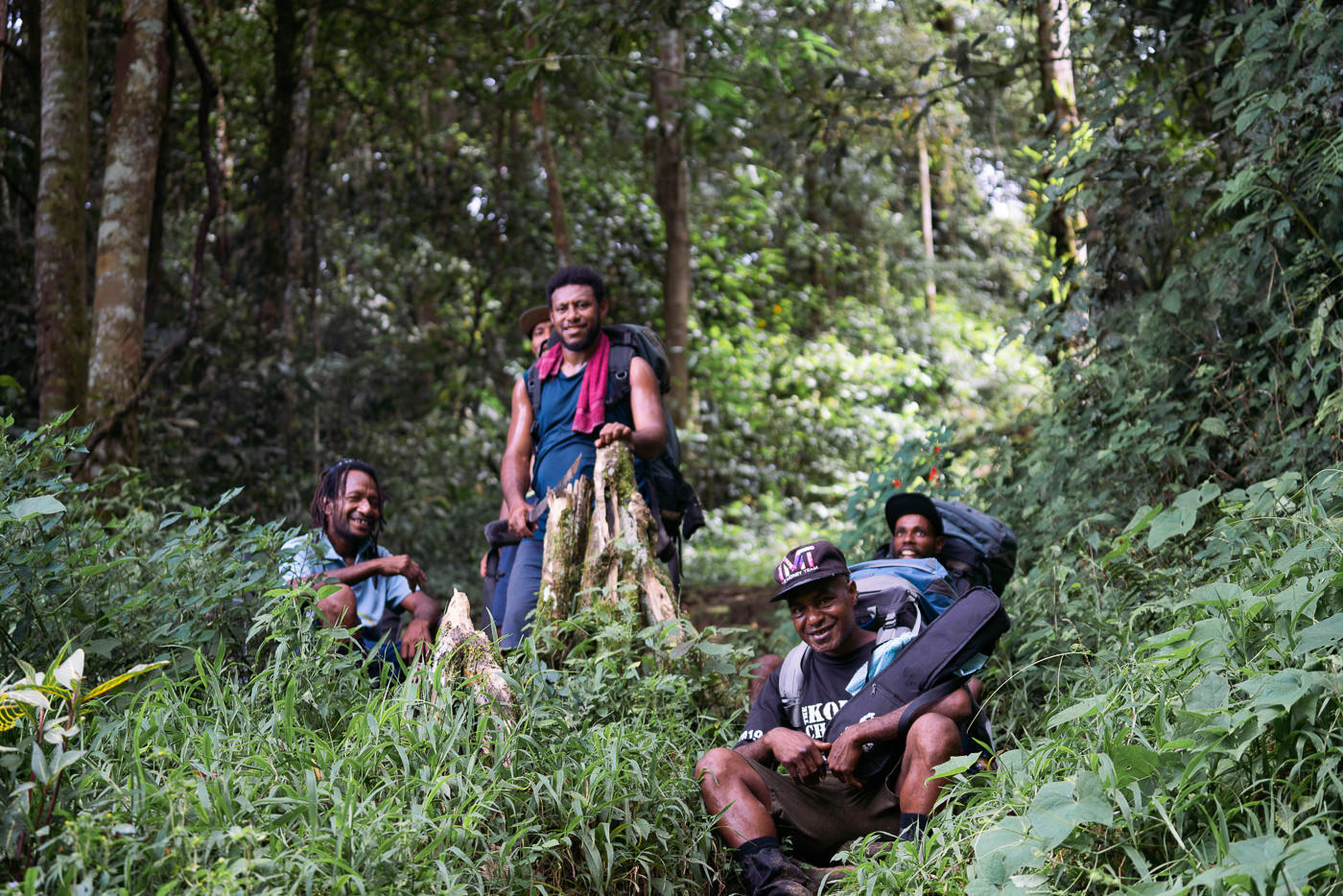
DAY 8
The final day.
We completed the final 6km in 70 minutes. How about that!? The Kokoda Track was done and dusted. An incredible experience. An adventure we’ll never forget. The lessons, the boys, and the stories will stay with us forever.

KOKODA TRACK PACKING LIST
HIKING GEAR AND TRAIL CLOTHES
RE-USABLE WATER BOTTLE
My Earthwell re-usable bottle doesn’t leave my side. Tucked on the side of my backpack, it keeps my water refreshingly cold for extended periods of time. In the dense jungle canopies, you’ll find yourself sweating in excess. Having the Earthwell flask filled with an electrolyte drink is a hot tip for keeping yourself in good working order. There are plenty of places to refill your bottle, so there is absolutely no need for you to use any single-use plastics along the Kokoda Trail. The Hydroflask is insulated and built to last, it won’t let you down.

GRAYL ULTRALIGHT WATER PURIFIER
The Grayl Ultralight Water Purifier is an understated game-changer for adventure travel. The Grayl Ultralight Water Purifier removes 99.9999% of viruses of disease-causing bacteria. The best thing about it, it only takes 15 seconds and one press to purify water from any freshwater source. Along the Kokoda Trail, we filled up from rivers, waterfalls, and local village taps. Unlike aqua purification tablets which require you to wait 30 minutes before drinking, you can have rehydrated yourself immediately with the grail ultralight water purifier.

HIKING BOOTS
Depending on your ability, you’re more than likely going to be out on Kokoda Track for anywhere between 7-12 days. To put that in perspective, you could accumulate 50-80 hours of direct time-on-legs hiking. Your future self will be grateful if you get yourself some quality boots. With undulating terrain and never-ending tree roots, your hiking boots will provide the necessary stability and support. I’d recommend waterproof hiking boots to shield off the rain and puddles.
GAITERS
Gaiters are incredibly helpful for keeping mud, stones, and debris out of your shoes and socks. Not only will they keep your shoes and socks in better condition but they’ll reduce the chances of blisters, cuts, and grazes. Make sure you buy gaiters with zip as velcro won’t hold strong verse the demanding conditions of The Kokoda Track. We used gaiters that covered our ankles, but I’d recommend something that covers at least the middle of your shin

TREKKING POLES
Trekking poles have been one of the best additions to my backpack this year. The Kokoda Trek has punchy uphill sections and steep downhills. Most people prepare for the uphill sections but don’t realize that the downhill will bring the most discomfort. Trekking poles help take the load off your knees and legs and provide extra points of contact with the ground to keep you from slipping.

LARGE BACKPACK
There are two ways to do the hike. You can carry everything in a big bag of your own or your guide will carry your camp gear and you just carry a smaller daypack with a camera, rain jacket, water, and accessories.
If you carry your own large backpack the guides recommend carrying no more than 10-12kg or you will really struggle with the 96km and the 6000m of incline throughout the week. Therefore a 60l backpack will be sufficient.

DAYPACK
I carried a daypack with my camera gear. The one I used on this trip was a Wandrd 31L PRVKE. It’s good for organizing your gear. It struggled a bit in the heavy rain even with the rain cover so I put everything inside plastic bags inside the bag. Overall it did a good job for me but you need a strong back and shoulders to deal with it as it isn’t a hiking bag specifically. A 30L is a good size or if you don’t have cameras you could go even less.

HIKING PANTS
Depending on the level of protection you’re after, it may be worth considering a pair of lightweight hiking pants. Personally, we wore shorts with crew-length socks and gaiters and that was sufficient. However, if you want to avoid getting scratched up in the dry season of Kokoda then hiking pants may be worthwhile.
ACTIVEWEAR T-SHIRT
I completed Kokoda using one shirt! Choose a t-shirt that dries quickly and uses an anti-stick material. You’ll be able to wash your clothes in the river most days along with drying it by the fire. I had one set of clothes at camp each night and then tried to dry my hiking set of clothes each night. Some mornings they were damp, to begin with. Two shirts on rotation would be a luxury but not a necessity.

LIGHT PANTS
Having a pair of tracksuit pants or lightweight dry pants that you can change into each night is both comfortable and practical. Once you’ve made it to the campsite, it’s the perfect time to recover and rest.
HIKING SOCKS
Quality over quantity. I’d recommend 2-3 pairs of crew socks made from merino wool. They’ll cushion your feet and keep shape no matter how dirty or wet they get. Your socks are going to be wet most of the trip, make sure you have ones that don’t slip around in your shoe. The Merino fabric means that you don’t really stink too much and the thick hiking style means you don’t get blisters like regular sports socks.
UNDERWEAR
A rotation of 2-3 pairs will be enough. If you wash and dry your clothes each night, you can really keep the weight down. I used a spandex-style trunk to prevent chafing from cotton-style undies.
SPORTS BRA
I’m obviously not an expert on this topic but I’d imagine a sport-style version to deal with the daily sweating, and damp conditions will help rather than other fabrics.

FLIP-FLOPS
Flip-flops are particularly useful for shallow river crossings. If your shoes haven’t been soaked by the rain, it’s better to keep them dry whilst you can. Switch out your hiking boots and put on a pair of flip-flops to maneuver through the rocks underwater.
Looking after your feet on Kokoda is incredibly important, wearing flip-flops and allowing your toes to dry out around camp is another power play. Some people brought water shoes but the river-crossings are so short that it is just another wet thing to carry around. Flip-flops doubles as a shoe to wear around camp at night rather than wet water shoes.

HAT
A lot of the time you’ll be covered by a dense jungle canopy, however, there are times of direct sun during the middle of the day that might catch you off guard.

RAIN JACKET
If you don’t want to embrace the rain, throw on a lightweight rain jacket. Having a rain jacket at camp is useful when you have to make a journey outside of the hut. It rained every single afternoon and night on our Kokoda trek.

BACKPACK COVER
An essential piece of equipment is a backpack rain cover. It rained every single day of our trek and there is often no shelter and no stopping. Therefore you want to be able to hike through the rain without all of your gear getting saturated. We had our electronics in plastic bags inside our packs as well but the outer backpack cover is the shell that does the most when protecting your gear from the rain.

SWISS ARMY KNIFE
You never know when you’re going to need it, but I guarantee you will. We used our swiss army knife to mend our trekking poles, cut toenails, fix blisters, and other little issues.
MOSQUITO NET
Our guides carried the mosquito net and we used it every night. They say prevention is better than cure, keep the mosquitos at bay. Nobody wants malaria.

UTENSILS
Your tour guide may provide but you may need to bring your own bowl, mug, knife, fork, and, spoon.

DRY BAG
We packed all our important gear in a dry bag and then placed it inside our backpack for extra protection. When you’ve seen as many people lose their phones or camera gear to water damage as I have, you’ll understand why I place so much importance on a waterproof dry bag. A quality dry bag will do as it suggests by keeping your belongings air-tight even if the bag happens to become fully immersed in water during river crossings or heavy rain.

CAMPSITE GEAR & SLEEPING GEAR
1 CAMP/SLEEPING T-SHIRT
Like I mentioned before one (or two) dedicated hiking shirts and one that you keep clean and dry that is used for camp and to sleep in. You do not want to be sleeping wet so protect this camp/sleeping gear in a plastic bag inside your bag. It’s your key to a good night’s sleep.
1 CAMP SHORTS
Shorts to wear around camp and sleep in.
LONG SLEEVED JACKET
To keep warm at the camps or after I jumped in the river to wash, I kept warm with a lightweight down jacket. In the highlands of the Kokoda Trail, I also slept in this for added warmth. At night in an open-air hut at 1900m of altitude, the air can be chilly overnight so, with a lightweight sleeping bag, I slept in my down jacket on two of the nights. On other nights just my t-shirt at a lower altitude.

SWIMWEAR
We hiked in what we swam in and swam in what we hiked in. If it rains, you’ll spend most of the day wet and if it’s sunny, you’ll be sweaty. We wore board shorts which made for efficient swims in the river to cool off.

DRY SOCKS
Just like the camp t-shirt. Keep one pair of socks for camp hang-outs only.
QUICK-DRY TOWEL
Pack yourself a quick-dry towel that won’t take up much space so you can dry off after a surf or shower and then hang your towel out to quickly dry. Unlike normal towels the micro-fiber towels dry in under an hour so they aren’t damp in your backpack and start smelling as you progress along the trail. If it does start to get damp, leave it by the fire and you’ll be good to go.

TENT
These were supplied by our guides but you can bring your own. This is something you should check prior to departure.
SLEEPING MAT
I used a super lightweight inflatable sleeping mat that gave me a full-body place to sleep that was well elevated off the ground. It was much better than a piece of foam packed down into the size of two tennis balls.
SLEEPING BAG
I used a three-season sleeping bag, which meant it went down to 0-degree capability. It was pretty thin, packed down super small, and kept me just warm enough at night on the coldest night. I wore a jacket in it on two of nights at 2000m of altitude.
SMALL PILLOW
You can get creative with your choice of pillow. Josh slept on a bag of his clothes or otherwise if you’re looking for a bit more comfort you can use a lightweight inflatable pillow. Having an inflatable pillow doesn’t take up any space or weight which is key when packing for an expedition. I used a Sea To Summit pillow that packs down to the size of one tennis ball and made my sleep very comfortable.

TOILET PAPER
Each campsite has a toilet but it is usually BYO toilet paper. They are drop toilets so you can drop your paper in after you finish your business, which means, fortunately, you don’t have to pack out your poop paper for eight days.
PHONE
If you’re not carrying a camera, this will be the only use for your phone. There is no signal or connection along any of the Kokoda and it’s great. Rarely do we get a chance to disconnect from technology like you do on Kokoda. Embrace it and put the phone away for a while.
POWERBANK
Again, there is no electricity along the trail. Bring along a power bank or two so you can keep your GoPro, phone and head torch charged.

HEAD TORCH AND SPARE BATTERIES
To save on buying batteries, you can get a rechargeable head torch. The head torch is useful when walking around the campsites at night or finding your way in the early morning. If you pack a battery pack, you’ll be able to charge your head torch each night.
GOPRO
The GoPro is a serious bang for your buck. There is nothing else that compares to it on the market right now. It allows you to take amazing underwater photos at a very affordable price. Pair this with a selfie stick to capture some incredible angles from the trail on Kokoda Track. GoPros are also extremely durable, they’ll be able to take a lot more hits than you will so you don’t have to be afraid of where you can and can’t take it.
CAMERA GEAR I TOOK ON THE TRAIL
- DJI Mavic 2 PRO
- GoPro Hero 7
- Sony A7iii
- 16-35mm F4
- 24-105mm f4
- 85mm 1.8
- Peak Design camera clip for the backpack
- Batteries and Accessories
Obviously, your camera setup is up to you but I will provide the following insights. A wild angle is great for the forest areas and capturing the entire scene. The 24-105mm was nice for some compression of mountains but there weren’t too many spots with mountain views compared to the amount of time spent in dense jungle.

The drone was great but a lot to carry for eight days considering I could only use three batteries as there is nowhere to charge along the way. I shot some nice stuff at sunrise along the trail at one of the villages and then at the end in the jungle on day seven for a higher perspective.
The GoPro was great for filming and taking a few photos in the rain. It rained really heavily so all camera gear was put inside plastic bags and became hard to access. The GoPro became our only tool during these moments.


WHERE TO STAY IN NEW BRITAIN
Kimbe is quite a remote region. Most overseas visitors to the region come to stay at Walindi Plantation Resort. The popular scuba-diving resort is the only well-known accommodation in the region and is where I stayed on my visit. It is one of the best places I have stayed on my travels. We had a private bungalow, fantastic meals each night and the diving is right on the doorstep. You just dive, eat, explore, eat, sleep, repeat, and everything else is taken care of to a very high, western resort-style standard. It’s definitely not a cheap option but you do get what you pay for at Walindi Plantation Resort, so if you have the coin, you will not be disappointed.

QUICK PICKS: 4 BEST RESORTS IN PAPUA NEW GUINEA
Don’t have time to read my detailed breakdown of all the best resorts in Papua New Guinea? No worries! These are my four top picks for where to stay in Papua New Guinea. If you book one of these four, you are guaranteed to have a great stay in a great location!
WHICH REGION OF PAPUA NEW GUINEA TO STAY IN
The blog will be broken up into five sections for the best specialty resorts and best hotels in PNG.
- Best Hotels in Port Moresby (The base to access all adventures and the International Airport)
- Best Papua New Guinea resorts for scuba-diving
- Best Papua New Guinea resorts for bird-watching
- Best Papua New Guinea resorts for surfing
- Additional accommodation in Lae


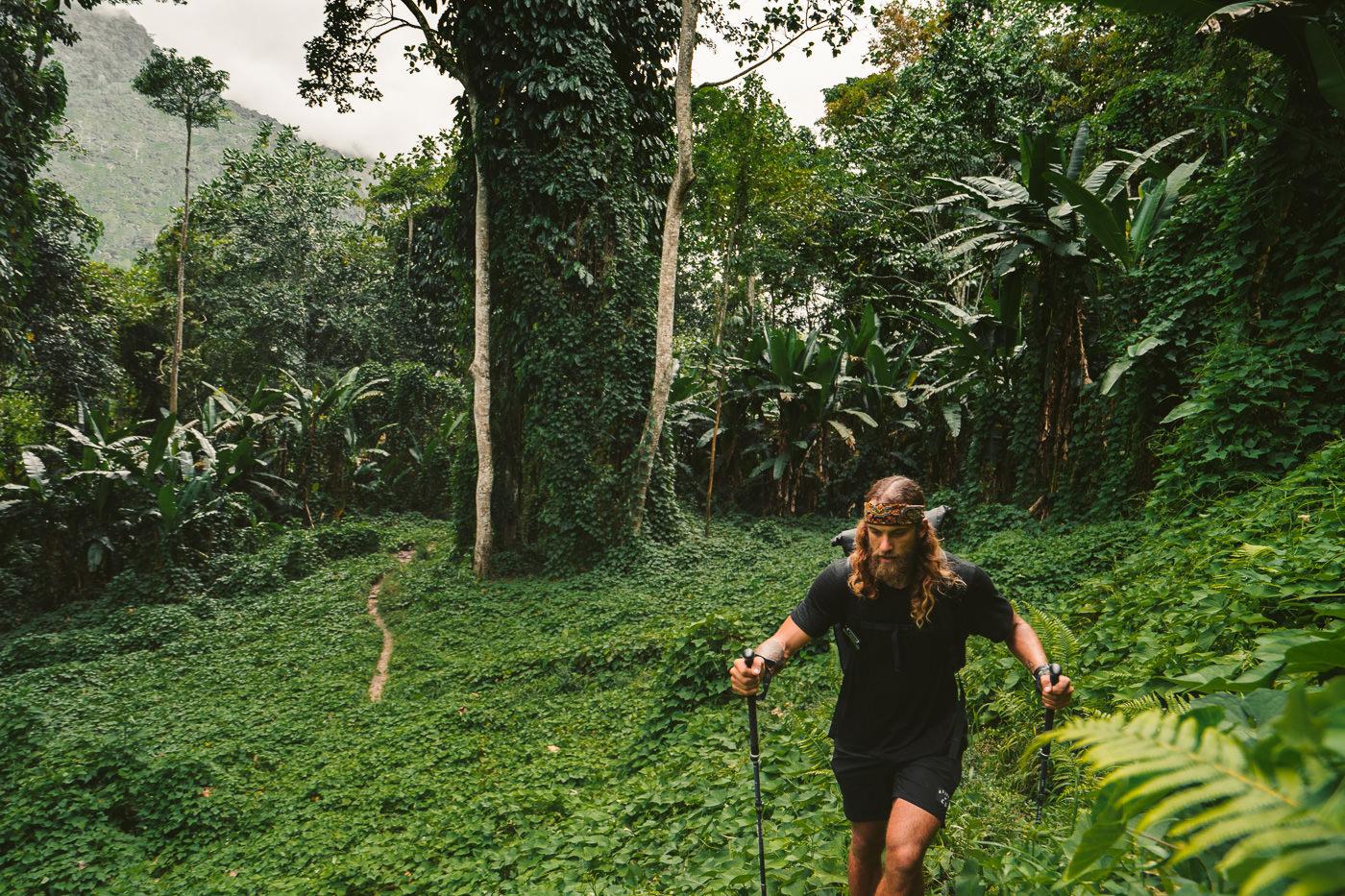
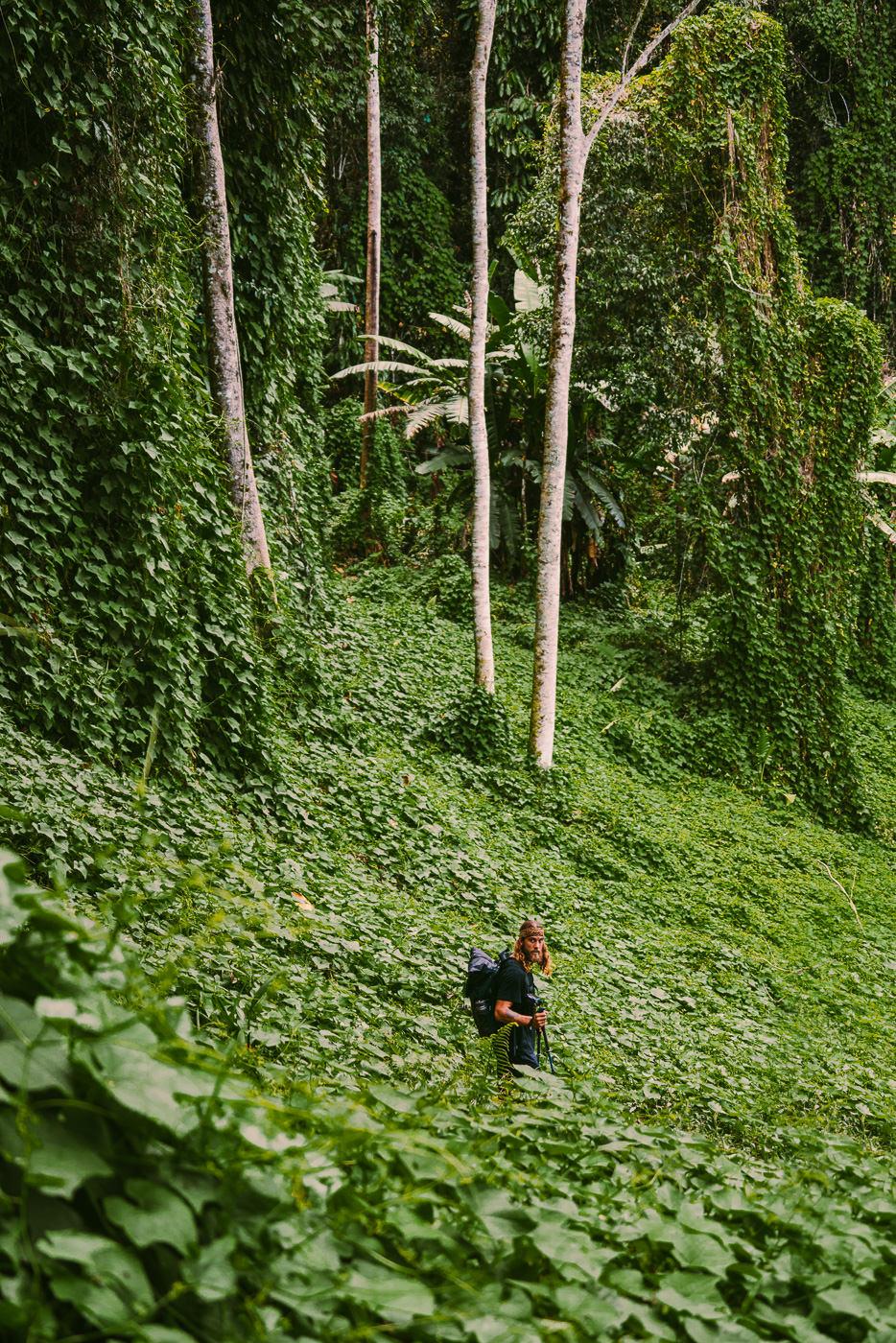



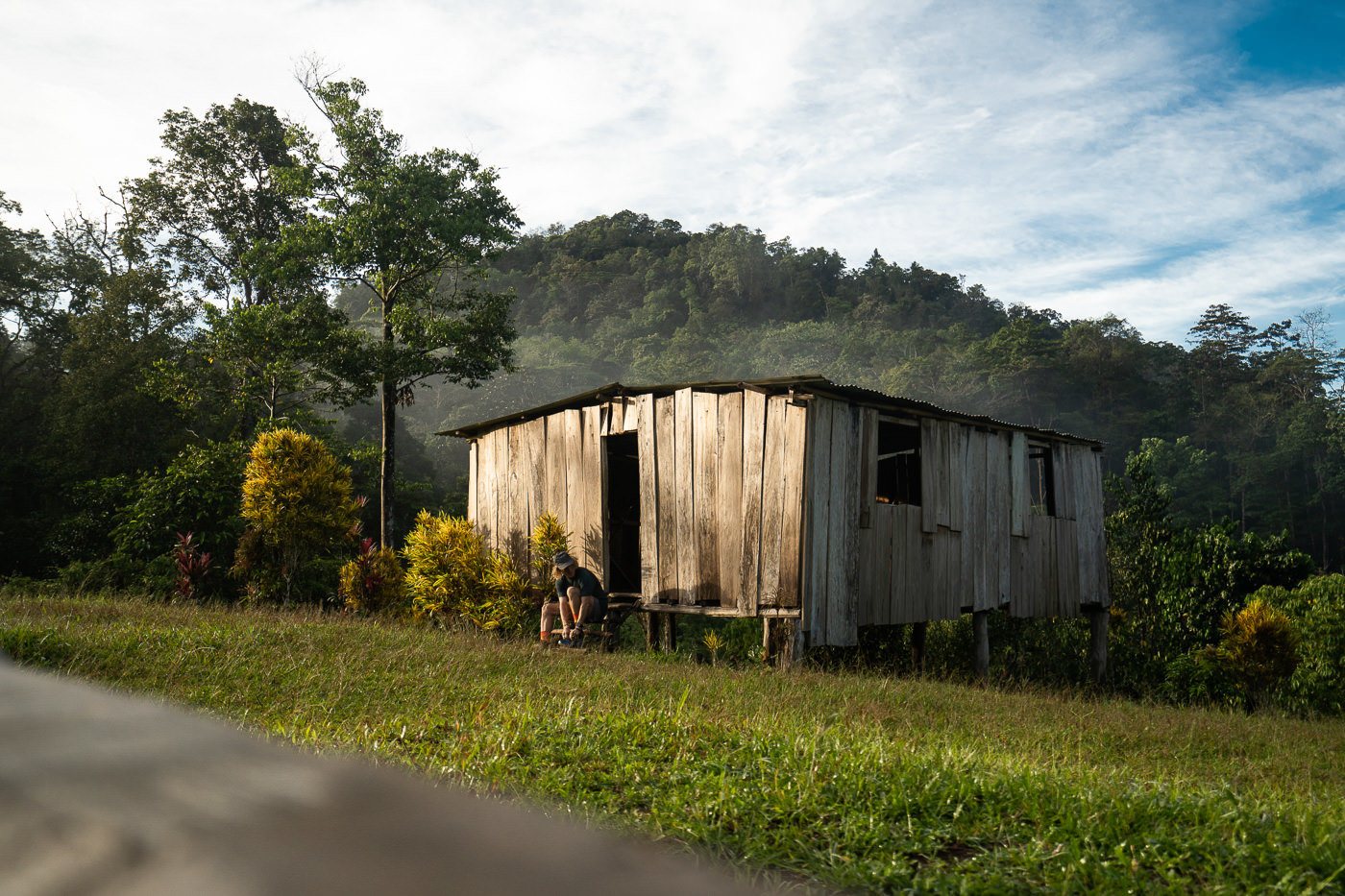


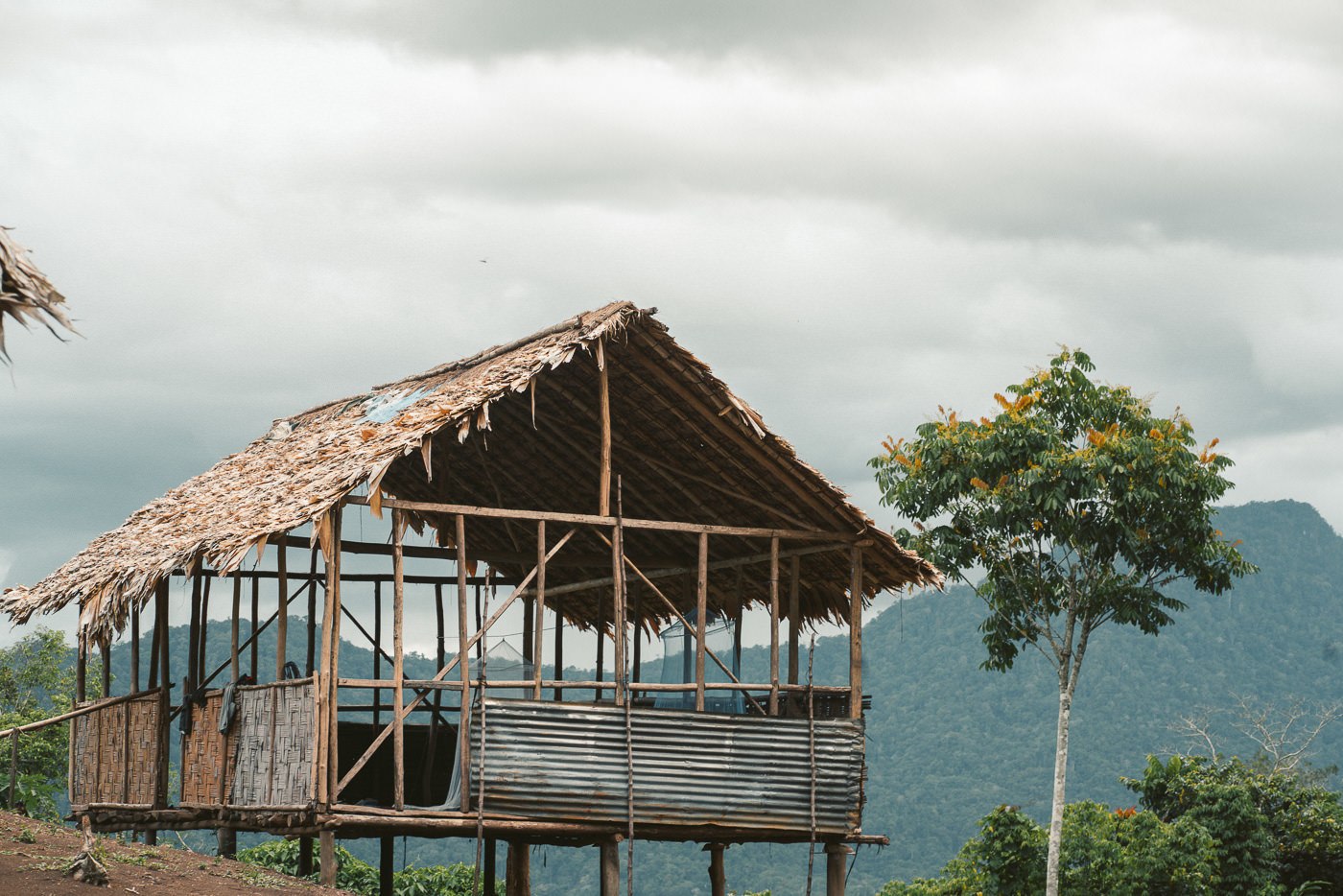


















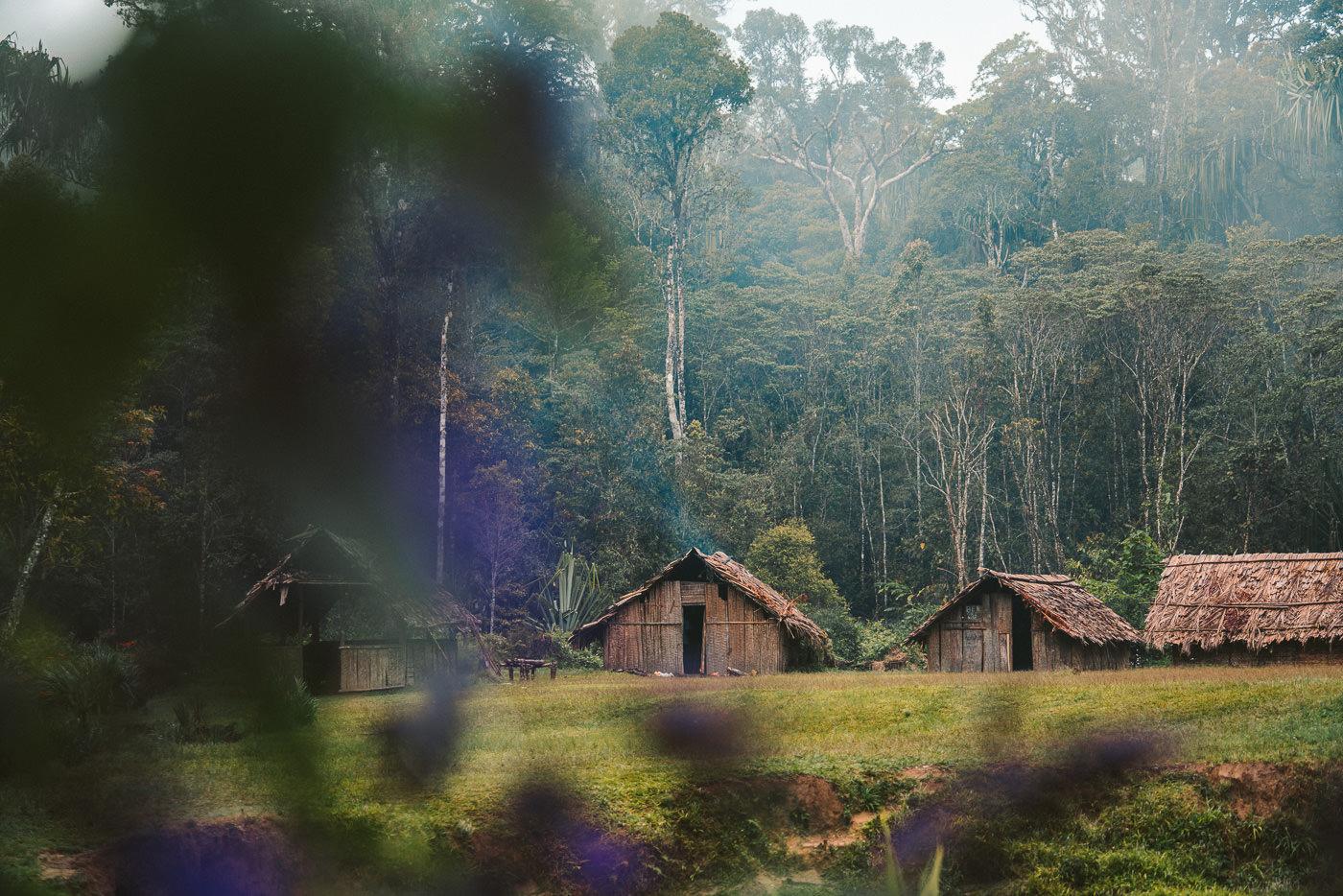











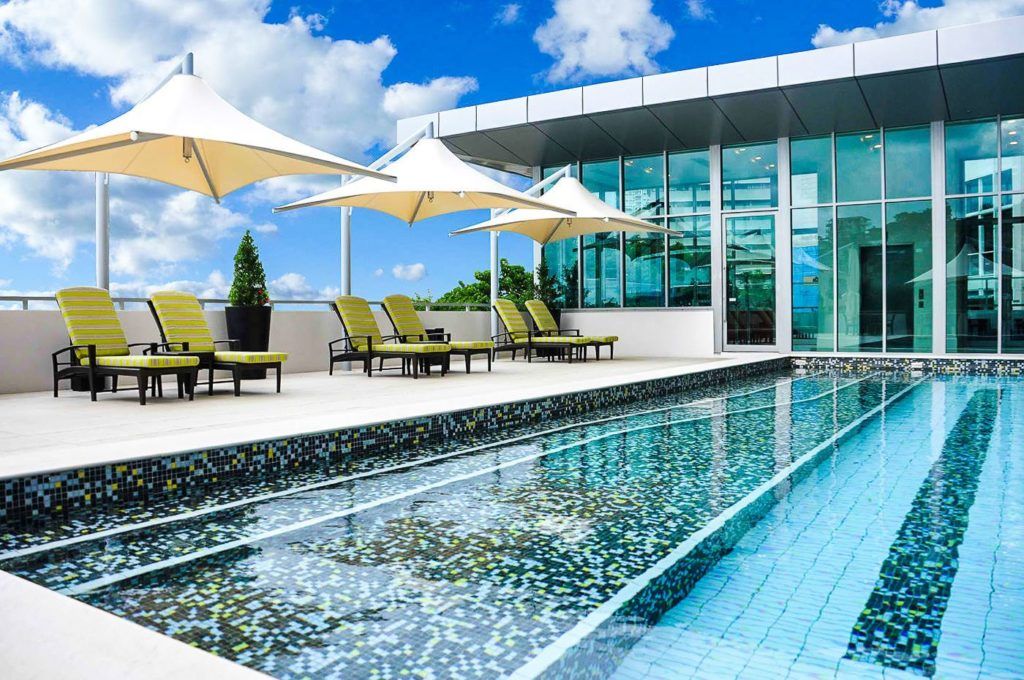



Timo Rieder
Wednesday 16th of November 2022
Thank you very much for this blog! Without you, we would not found Buna Trekkers. I can recommend this company. Please choose a local one, you will never find a better opportunity to have a trail and culture together. If you wanna have more personal informations about the Trail you can write me [email protected]
Best wishes, Timo from Germany!
Wayne
Sunday 27th of March 2022
Really enjoyed your thoughts and advice. Thank you
Lina
Saturday 26th of February 2022
Would jungle boots be better in this environment than gore tex boots?
Emma
Monday 18th of October 2021
Oh, it's great that you shared your experience. Compression socks are just a must have here, they have saved me from overwork and unforeseen injuries more than once, I found high-quality options for myself here https://compressioncare.ca/
Sam Molloy
Monday 15th of March 2021
Hi Jackson, great blog gave me a real insight into your adventure. A hot topic that no one is willing to answer....... going solo!
This is not a budget-related decision. Im thinking of getting a sat phone to cover me in case sh*t hits the fan. I enjoy the challenge mentality and physically. (Just for a brief background of myself ) I have trekked the Everest base camp solo, although I didn't need to carry a tent or food for this trek I have previously done 2/3 day treks carrying all my supplies.
The information I'm seeking is all-around safety. did you encounter times where you thought you would get robbed. My decision about going solo is based on the likelihood of being robbed and left stranded. Surely this is a thing of the past ??? Thanks Sam
Jackson
Monday 15th of March 2021
Hey Sam,
I would say definitely possible although you will have some logistical issues like getting to and from the trailhead and finish. Possible to overcome but you will need to be adventurous and resourceful as there isn't necessarily public transport or Uber available. These types of situations can put you in more danger than when you are with a tour guide in an organized vehicle but that is how it goes. I think you should be okay but of course cannot guarantee. The trail itself felt safe and each village was quiet and peaceful. We didn't come across any animosity or strange people along the hike just friendly locals. I think you should be fine and the hike itself isn't hard if you are experienced. Good luck. It could be best to do it yourself but have a local guide drop you off at the trailhead and then someone else organized to pick you up or at least have a few local contacts although not really service along the way.